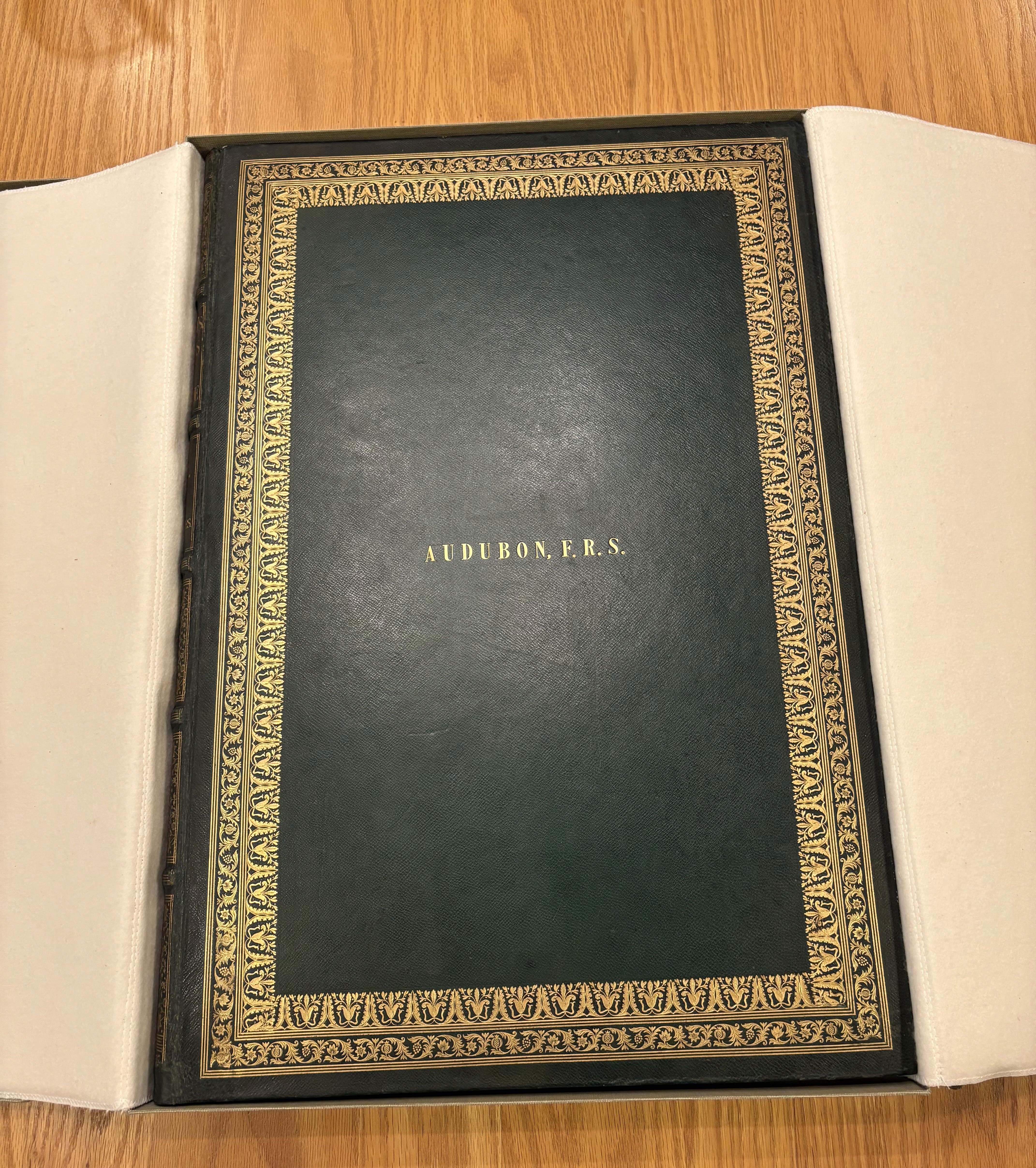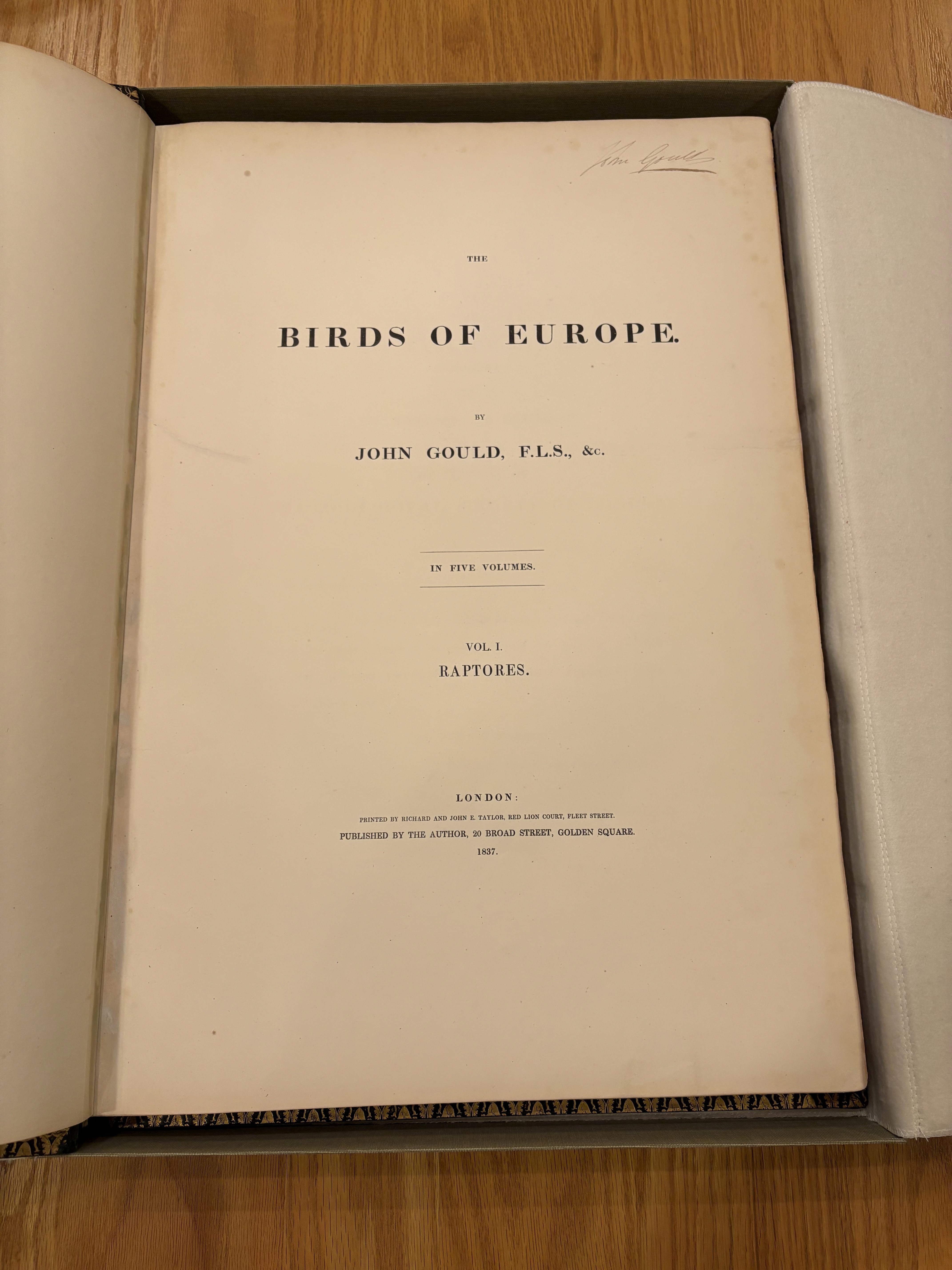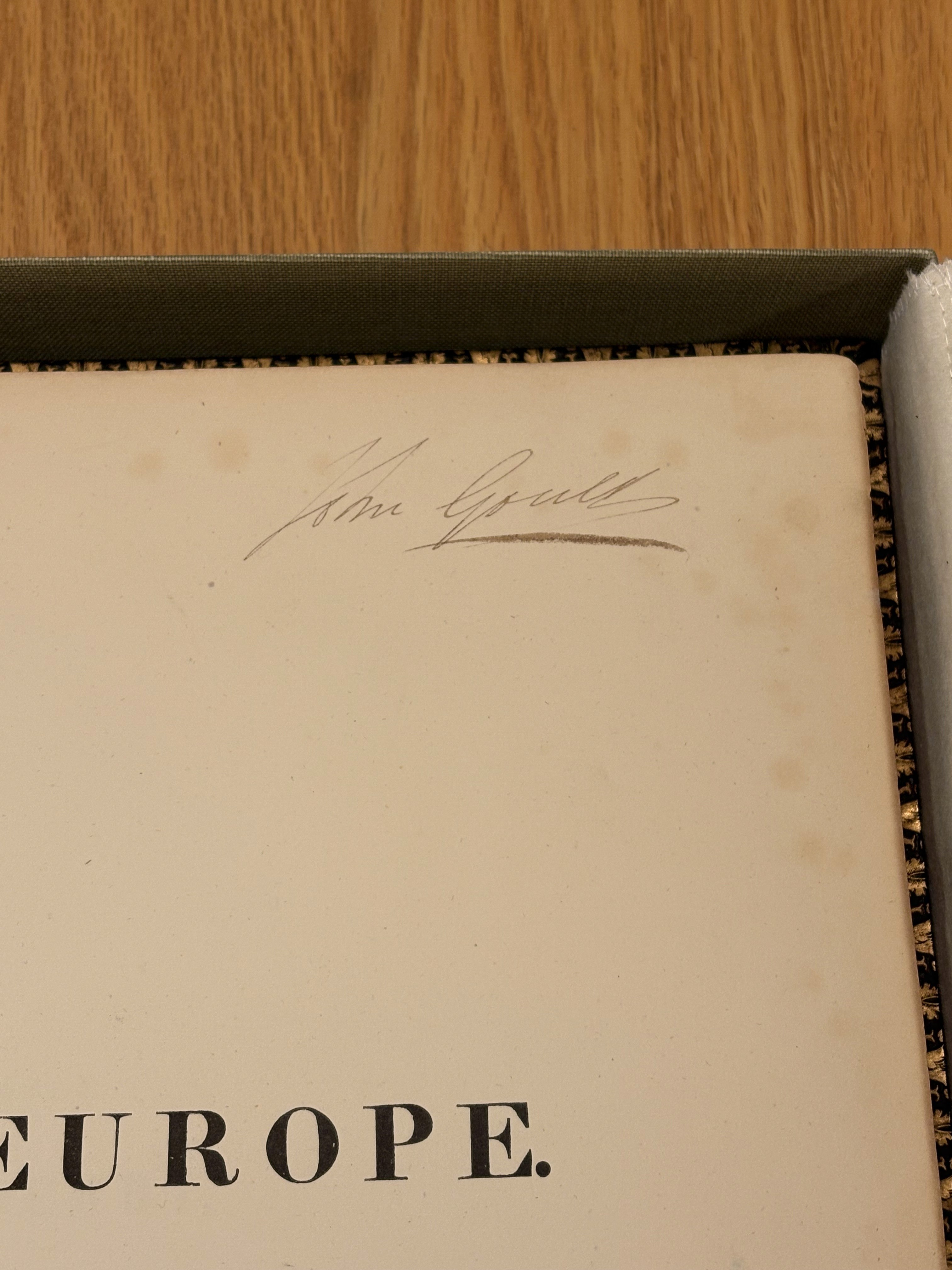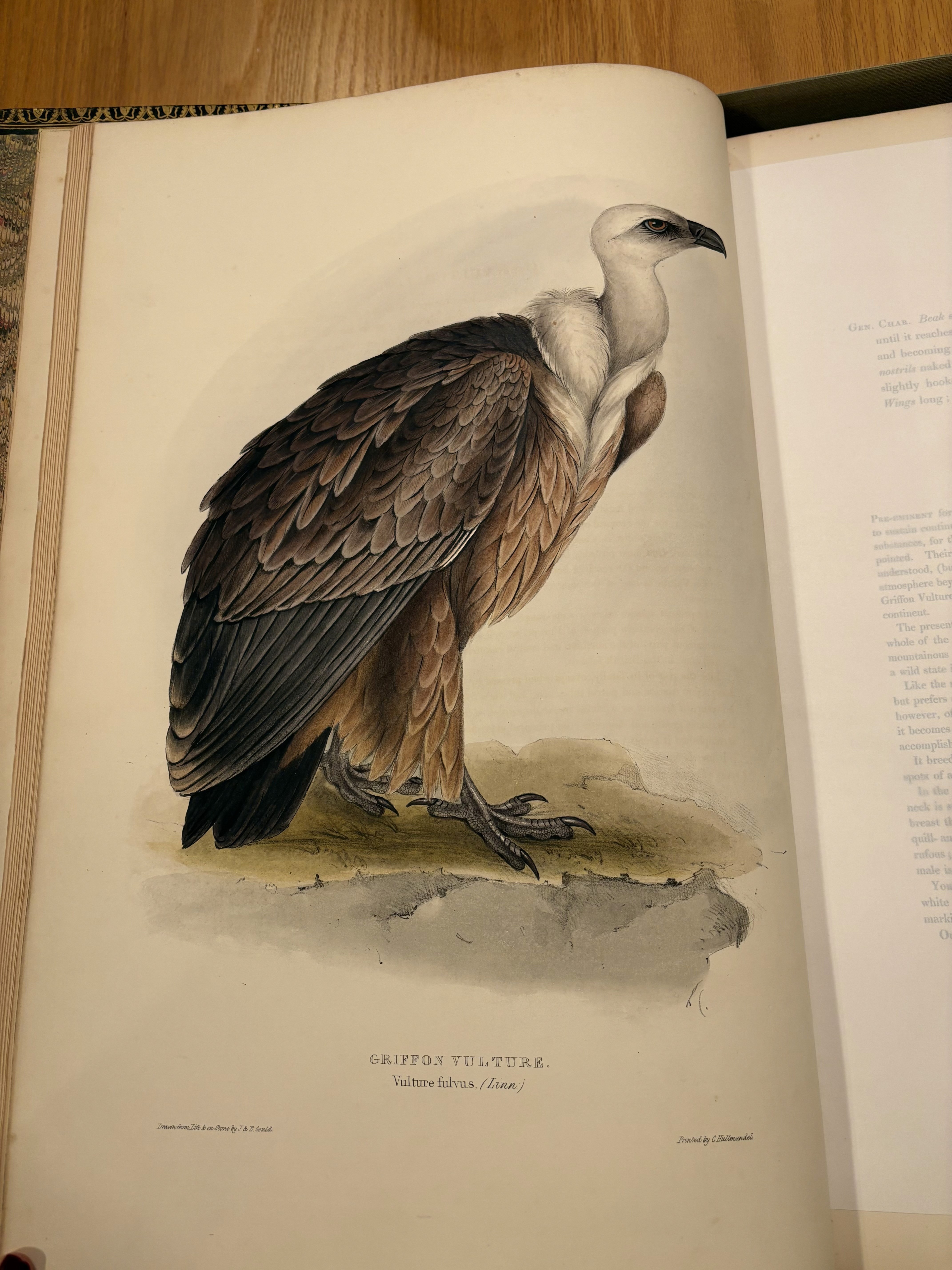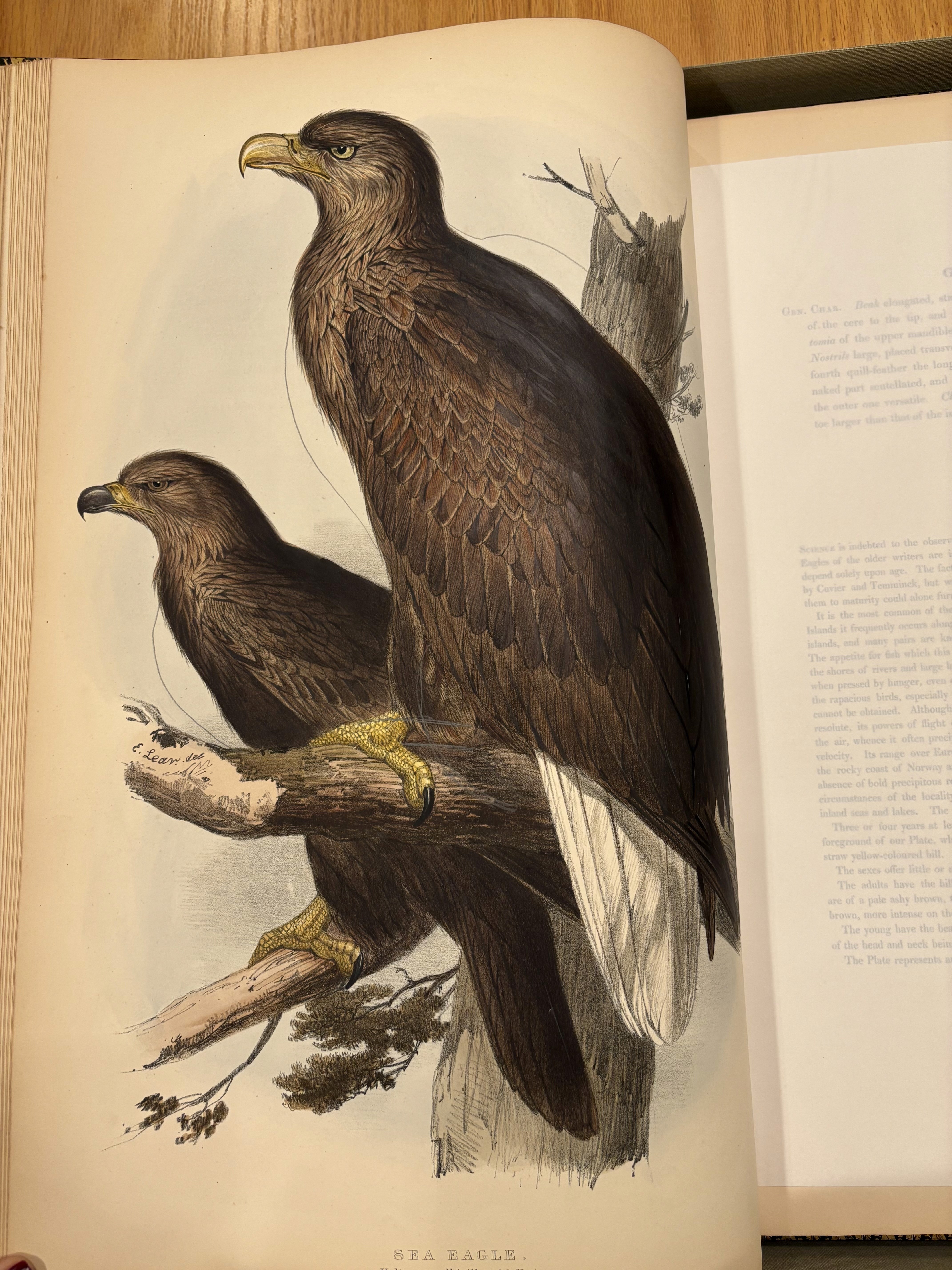Tracing Provenance: Audubon’s Copy of Gould’s Birds of Europe
9/21/2025
Hector Chen
This past week, I had the chance to dive into a fascinating piece of provenance research. The story began with a conversation with Susan Falciani Maldonado, University Archivist & Director of Special Collections at Bucknell University’s Bertrand Library, which has long owned a magnificent five-volume set of John Gould’s Birds of Europe. For years, an intriguing claim has surrounded the set: that it once belonged to none other than John James Audubon.
To add a bit of context: John Gould (1804–1881) was one of the most prolific ornithological illustrators of the nineteenth century, producing lavishly illustrated volumes such as The Birds of Europe (1832–37), which combined scientific precision with artistic brilliance. His work helped shape both natural history and the visual culture of Victorian Britain. John James Audubon (1785–1851), meanwhile, was the celebrated American naturalist and painter best known for The Birds of America (1827–38), a monumental achievement in both scale and artistry that secured his legacy as one of the greatest bird artists of all time. Though they admired one another’s work, Gould and Audubon were also rivals, each striving to assert authority in the burgeoning field of ornithology. To connect these two figures through a single set of books is to bring together two giants whose friendship, competition, and artistic innovation left a lasting mark on natural history.
It was a compelling story, but until last week, the provenance chain was incomplete.
Picture of Bucknell's copy of Birds of Europe, Courtesy of Bucknell University.
Susan had already traced the volumes back to Hollis Ross, Bucknell Class of 1928, who later donated them to the university - from donor records, she had also established that Ross had purchased the set at a Sotheby’s Parke-Bernet auction on May 14, 1971. What remained unclear was whether the sale catalogue could verify the book’s earlier ownership.
The research trip took me to the National Art Library, at the V&A, who holds over 140,000 art auction catalogues from more than 200 auction houses,
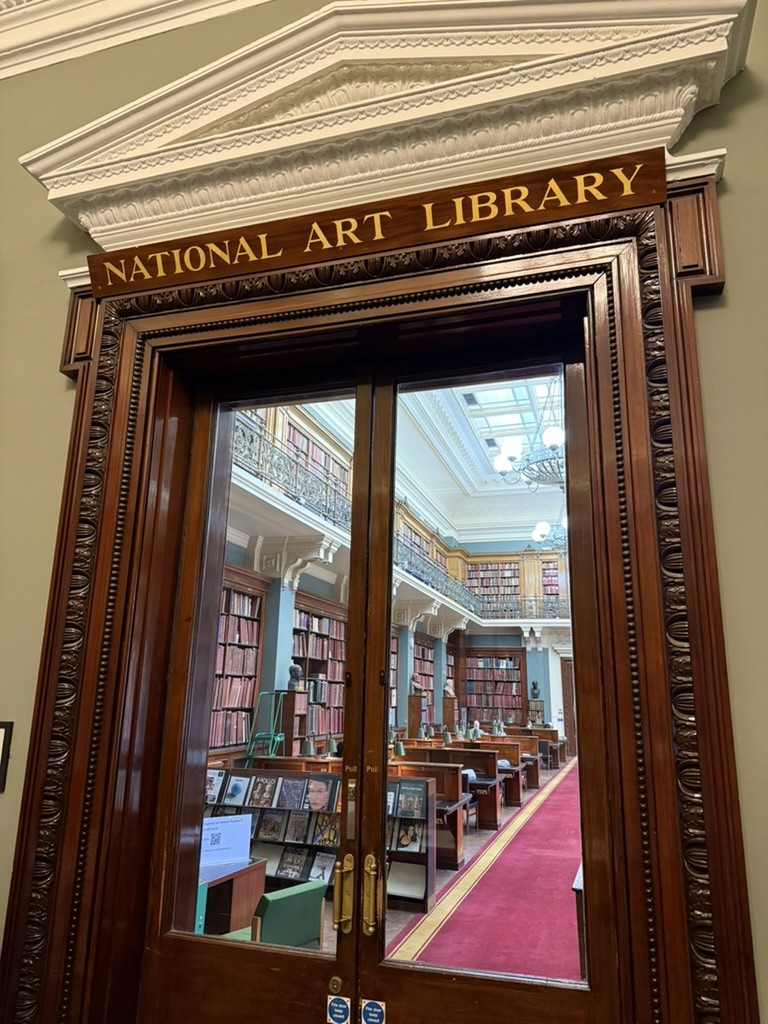
This is where I came in. Drawing on my connections and my experience working with auction catalogues, I visited the National Art Library at the Victoria & Albert Museum in London, where I requested the auction catalogue for the 1971 sale. Sure enough, the listing for Lot 16 described the very set of Birds of Europe, complete with a photograph and details identifying it as Audubon’s copy. The photograph in the catalogue matched exactly the images Susan had sent me. This was when I texted Susan: “Yes—it’s your copy.”

The title of the Parke-Bernet catalogue already indicated that the sale featured Gould’s Birds of Europe (Audubon’s copy). Sure enough, the catalogue also included a photograph of the set—something unusual in book sales, where illustrations were typically reserved for only the most important or valuable lots. Its inclusion underscores the prominence of the work and lends additional credibility to the Audubon provenance.
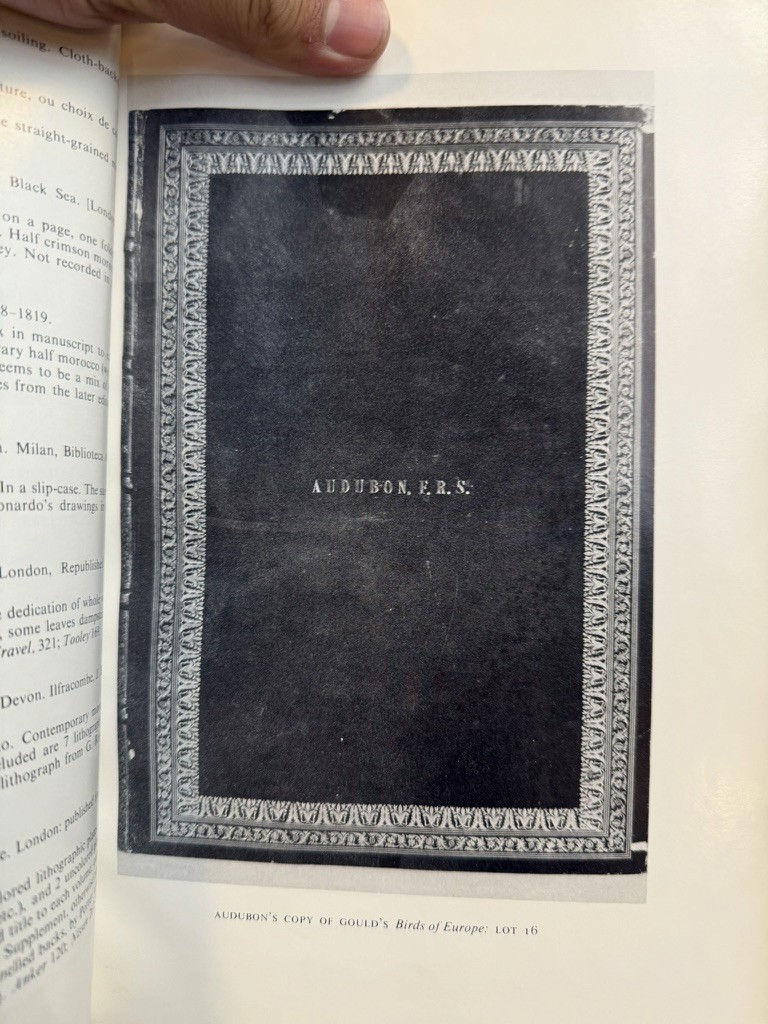
Here, the lot essay clearly highlights that the subject book belonged to Audubon, and the physical description given in the catalogue also matches the Bucknell copy. The final three references — Anker 169; Nissen 371; Sitwell p.77 — indicate that this work is recorded and described in those standard bibliographies at those locations. Such citations reassure collectors that the book is recognised in the scholarly literature, assist in confirming the edition or state, and underline the work’s importance and desirability within the field.
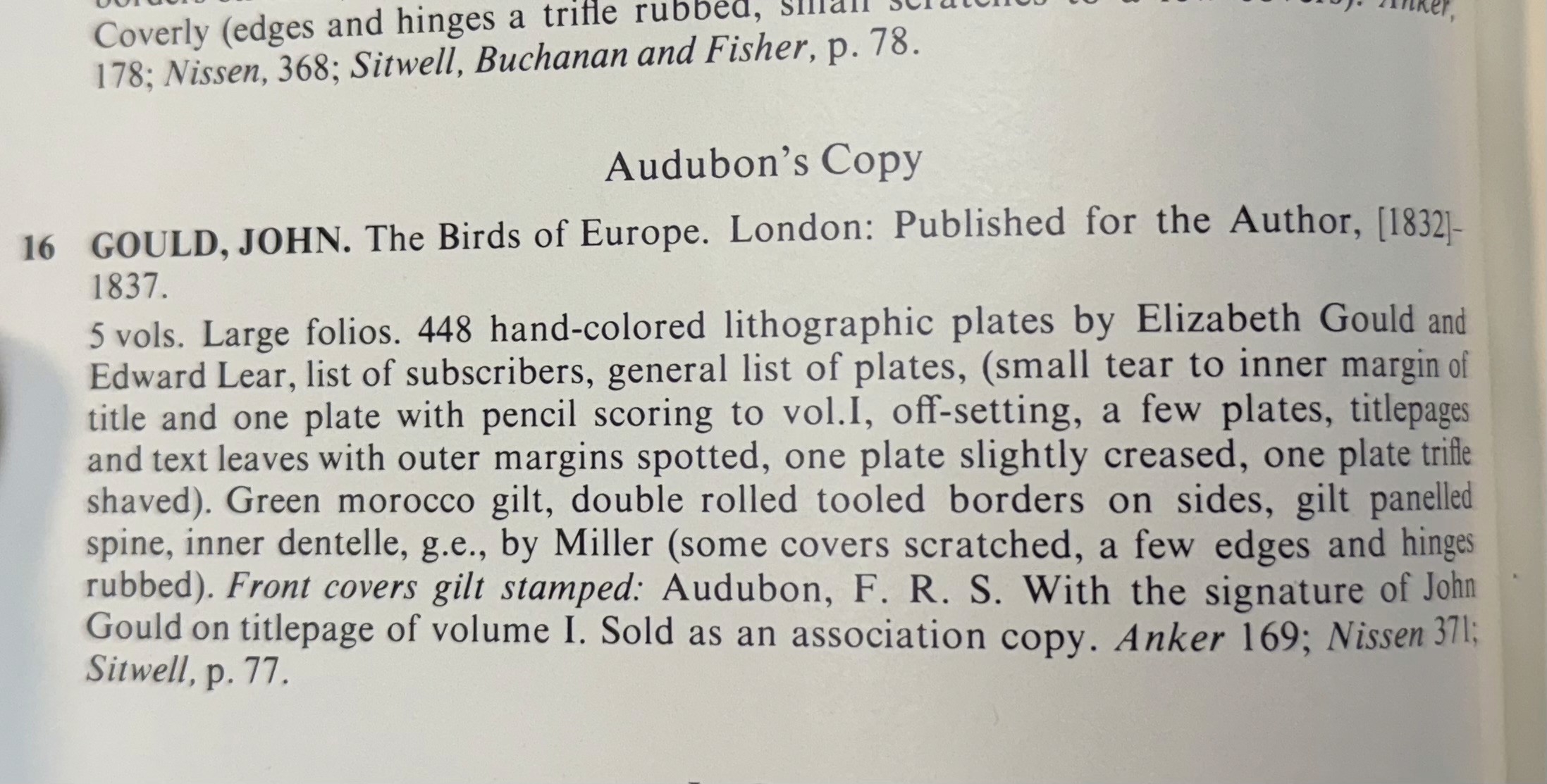
Even better, the catalogue included the price list, confirming that the volumes sold for $9,000
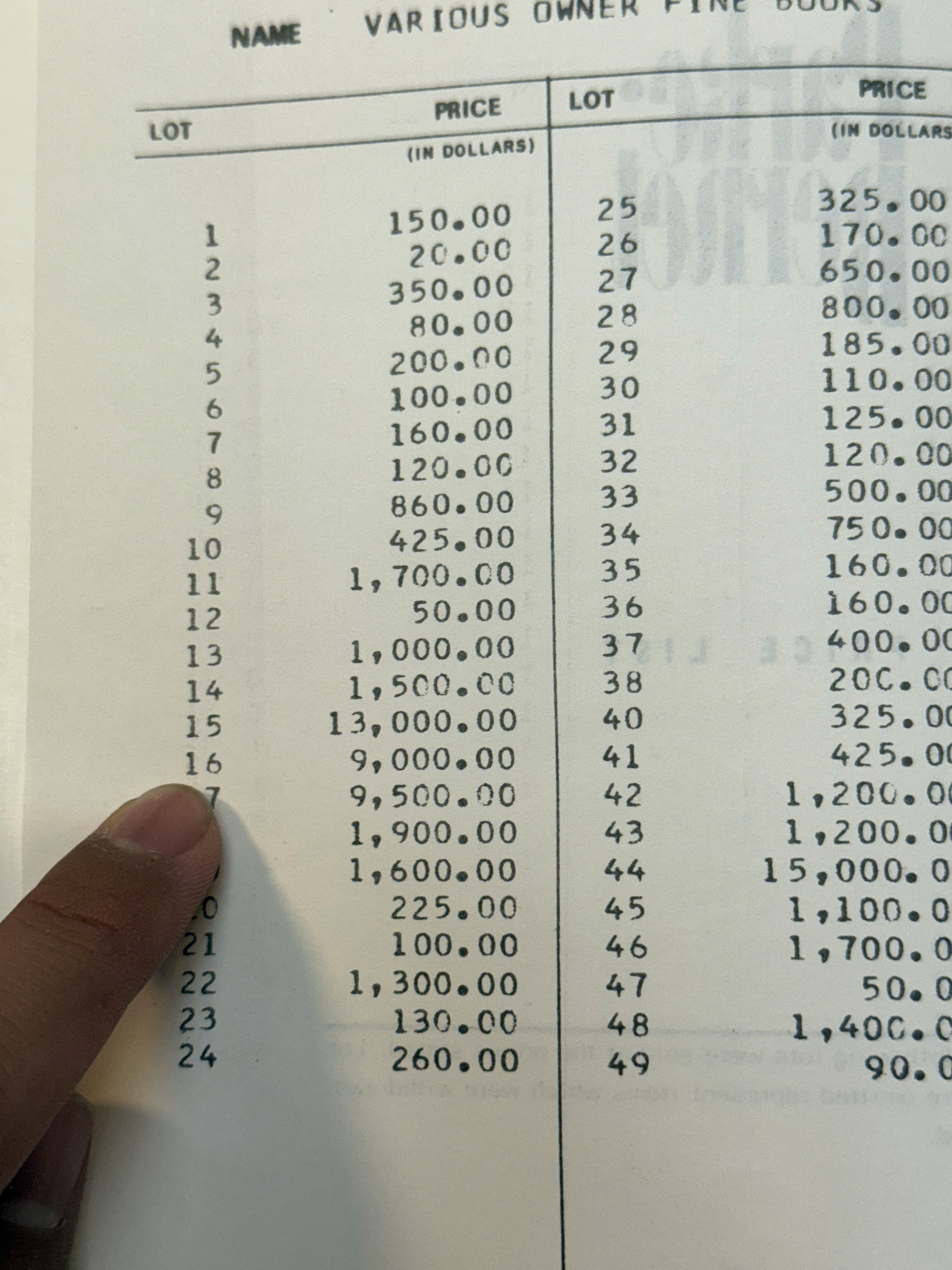
With this discovery, and with additional research conducted at Bucknell, we can now confidently confirm that Bucknell’s set of Gould’s Birds of Europe had indeed belonged to Audubon. The evidence not only resolves a long-standing question but also enriches the historical significance of the set.
Provenance research, in this case, not only highlights the remarkable connection between two giants of ornithology—Gould and Audubon—whose careers often intersected in both friendship and rivalry, but also confirms the rarity and historical value of Bucknell’s set. Beyond its monetary significance, the discovery anchors the volumes within a rich narrative of intellectual exchange and collecting history, one that can now be shared with future scholars and visitors.
If you are a collector, institution, or researcher interested in provenance work or collection advising, feel free to reach out to Chan Art Advisory—where every object has a story worth uncovering.
© 2025 by Hector Chen
